-
Notifications
You must be signed in to change notification settings - Fork 88
Formalising Hydra
We want to:
- Have a common language between researchers and engineers, in order to ensure the safety guarantees stated in the paper are actually provided by the implementation,
- Help with the auditing and certification process from third-party,
- Validate changes to the protocol introduced by the implementation or by new feature w.r.t. to the specification,
- Provide strong evidence to users Hydra is actually safe and can be entrusted with their funds.
To this end, we are looking for a way to formalise the Hydra Head Protocol
In the original Head paper, Various desired properties are stated (in section 6.1) within an "experiment" setting describing the behaviour of the system in the presence of an adversary with some variations in the degree of corruption possible:
- Consistency
- (Conflict-Free) Liveness
- Soundness
- Completeness
Those properties link all three specifications presented above and in essence state the requirements the Head protocol needs to meet. Note that only the Close, Contest and Final transitions of the on-chain state are considered in the security "game".
The (Simple) Hydra Head protocol is specified in pseudocode, defining both:
- The Off-chain protocol producing consensus about the Snapshots (eg. UTxO) when the Head is open,
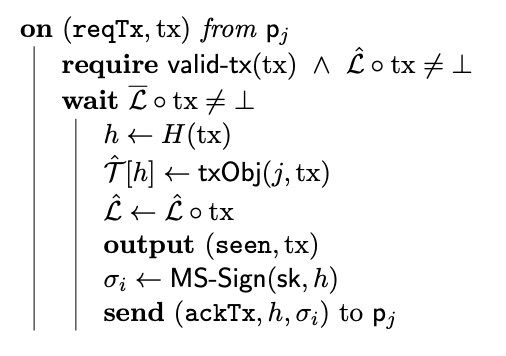
- The Client-to-Head Interaction protocol defining the effect external inputs have on the system,

- The On-Chain Validation "smart contracts" mixing both validation of inputs (eg. redeemers) and production of new state (eg. datums).
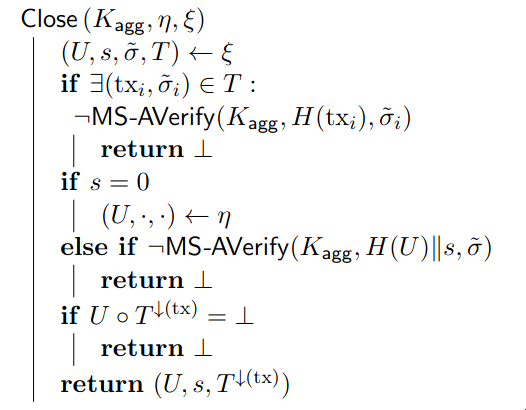
The properties are then proven in subsection 6.4.
The actual implementation of the Hydra Head protocol in this repository departs from the specification in the following:
- The On-Chain validators are implemented in Plutus which requires validators to be boolean functions,
- The on-chain state change is actually produced off-chain, by the entity crafting the transaction,
- The implemented off-chain protocol is the so-called Coordinated Head Protocol which lets the leader be entirely responsible of which ones among the seen transactions shall be part of the produced snapshot,
- This removes the need for confirming every single transaction hence removes the associated messages exchange in the protocol,
- We implement an "optimisation" stated in a footnote on page 21 whereby all messages are broadcasted to all nodes and each node does the confirmation independently from all the individual messages, thus removing another message.
The code has an extensive test suite, comprising unit tests, integration and end-to-end tests, and property tests. For the on-chain validators we have implemented specific property tests that introduce Mutations to otherwise "healthy" transactions in order to test-drive and check each transaction's type behaviour. We are aware we are missing some intermediate property tests checking the state machine transition's logic, both for off-chain and on-chain protocol.
We have been investigating various solutions, and discussed with other teams what promising avenues there could be to solve our problem.
We have experimented with retro-engineering the actual implementation in the pseudo-code notation from the paper, in order to get a sense of how much effort this would imply and whether or not this would be useful:
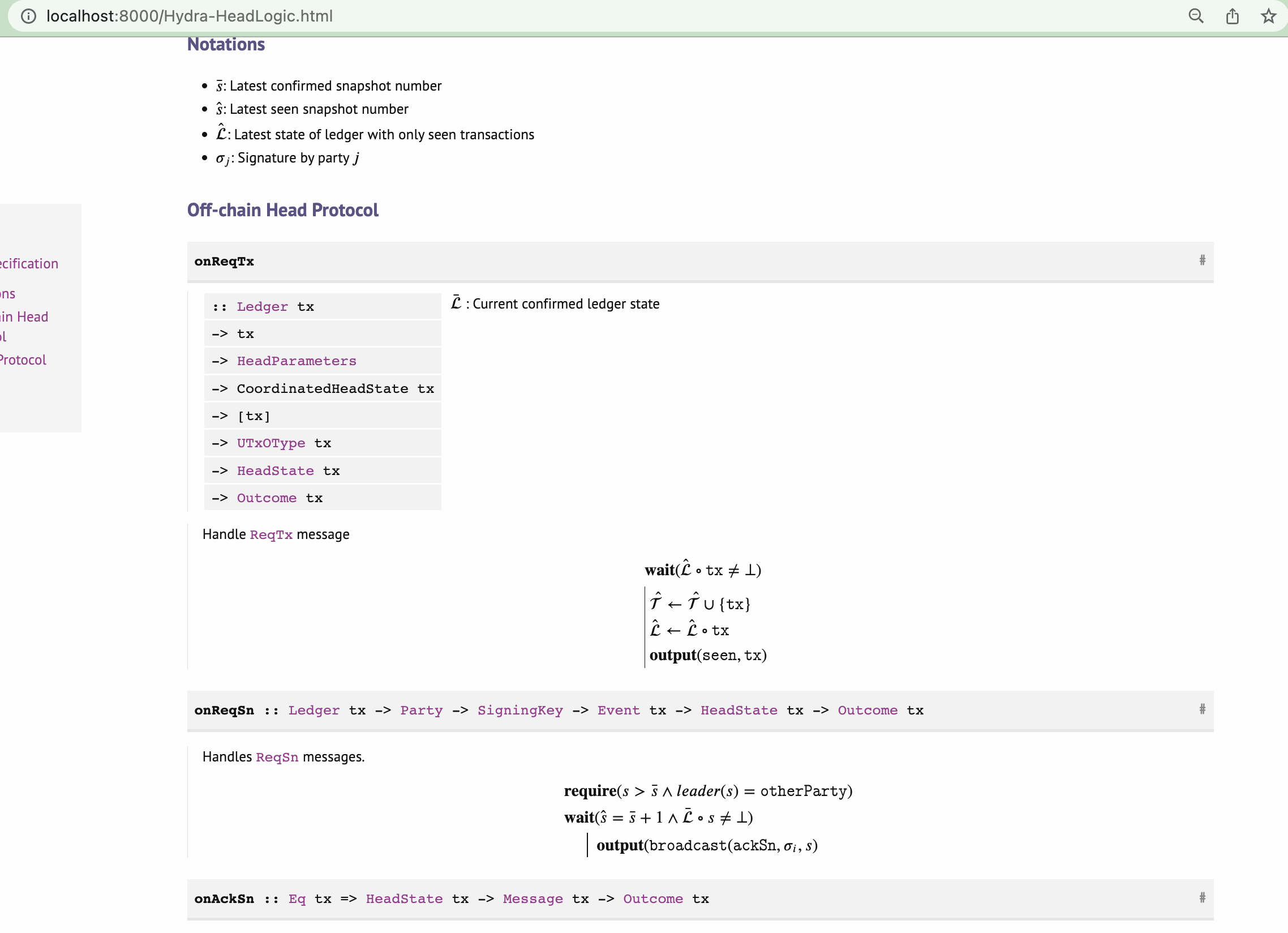
- The result looks identical to pseudo-code researchers use and is defined close enough to source code it is easier to maintain a high-fidelity transcription over time should the code, or the specification, changes.
- The notation is however plain LaTeX and is not amenable to any kind of mechanised analysis, reasoning, or extraction
- In a meeting with researchers, we discussed refinement-based approaches where one derives a concrete executable program from an abstract specification by successive refinements of models and proofs that the derived model maintain the invariants or properties of the model it is derived from.
- This is how "first-generation" formal methods like B or Z worked
- Coq is the somewhat de facto standard nowadays for this kind of approach as it provides way to extract Haskell code out from Coq-proven functions
- Other options exist, among which some are already in use within IOG: Agda, Isabelle/HOL or TLA+ although not all of them provide a way to compile the model down to executable code
- We have a Plutus metatheory in Agda so this could form the underlying semantics against which formalising actual contracts' behaviour and prove properties about them
- Quviq develops the quickcheck-dynamic framework whose usage is detailed in the Plutus documentation. This framework leverages the
Emulatorinfrastructure fromplutus-appsand thus tailored to DApps that are based on the PAB andContractmonad which is not the case for Hydra (we talk directly to the chain) - Quviq has partnered with us to adapt the
Contractmonad to the way we create and observe transactions, so that we can use the quickcheck-dynamic framework to model Hydra protocol and check its properties
We had a discussion with Jared and Tim from Ledger team, about the way they approached this problem
- In the ledger, the specifications are defined in LaTeX then translated to Haskell as predicates and transition rules.
- Those rules are then exercised with property tests that generate a complete chain trace (eg. sequence of transactions) and ensure the invariants are preserved
- This process has its shortcomings as the researchers have no direct way to relate specifications to actual code
We discussed various other options to avoid the desynchronisation between formal specification and code problem:
- OTT is a formalism that allows one to write a single specification and then generate various artefacts from it, including LaTeX and executable code (OCaml for example)
- Tim shared a Haskell-centric approach he practiced on some example code whereby:
- The specification is written as a Haskell typeclass defining an interface,
- The typeclass embeds
Property-returning functions like:propZero:: (Show t,Eq t) => t -> Property propZero x = (applyDiff @t) x (zero @t) === x - Those properties can be tested against actual implementation by instantiating types:
testProperty "propZero Map" (propZero @(Map Int Int))
We had a discussion with Jean-Frédéric Étienne and James Chapman on how this problem has been approached in the Djed algorithmic stablecoin.
- The Djed model defined in the
has been formalised in Lustre and its properties model-checked using Kind 2. The model-checking process uncovered issues and also led to formulation of more properties.
- Those properties have been analysed and enumerated in a document, and then materialised as Jira tickets:
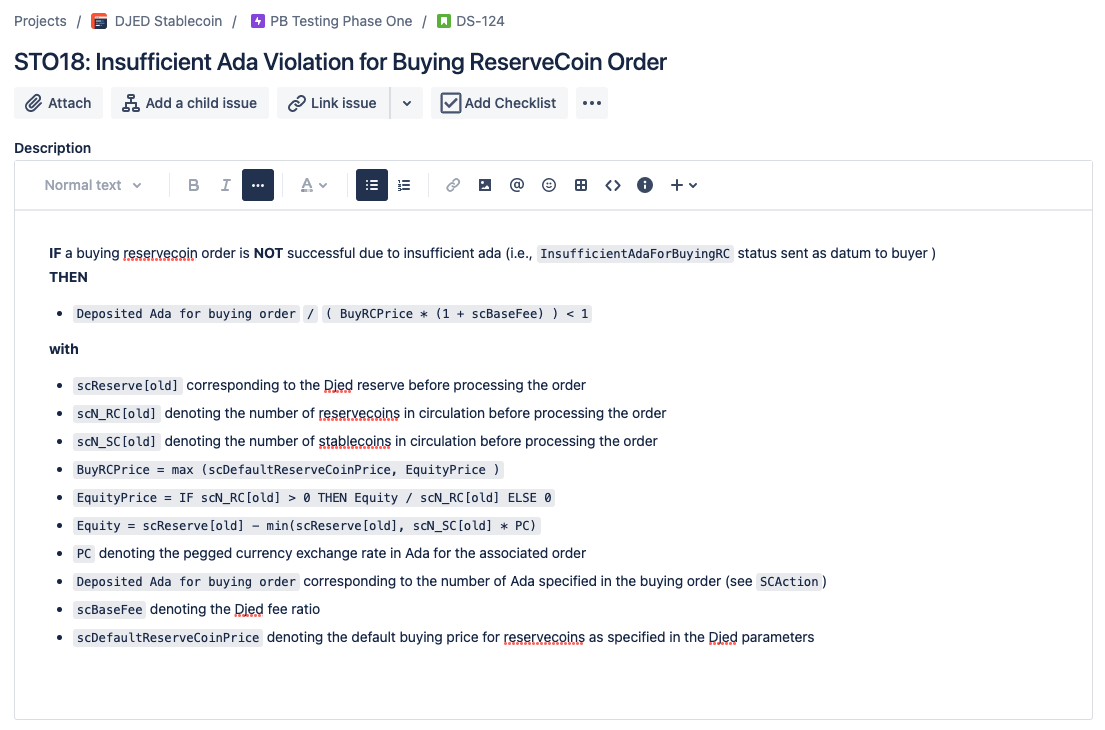
- Then for each of those, a Quickcheck property is implemented
{-| Check stablecoin test objective #18 (https://input-output.atlassian.net/browse/DS-124) (use after an unsuccessful buying reservecoin order with insufficient Ada for buying RC response) -} checkSTO18 :: (MonadError StableCoinTestError m, MonadWriter OrderTestLog m, MonadReader DeployedStablecoin m) => OrderSummary -- ^ Summary of the order that was executed -> SCBankState -- ^ Bank state before executing the order -> SCBankState -- ^ Bank state after executing the order -> m () checkSTO18 OrderSummary{boPeggedCurrencyExchangeRate, boOrderTxOuts} oldState _newState = do StableCoinParams{scBaseFee, scDefaultReserveCoinPrice} <- asks (sqsStableCoinParams . dsQueryState) let buyRCPrice = max scDefaultReserveCoinPrice equityPrice equity = R.fromInteger (scReserve oldState) P.- min (R.fromInteger (scReserve oldState)) (boPeggedCurrencyExchangeRate P.* R.fromInteger (scN_SC oldState)) equityPrice = if (scN_RC oldState > 0) then equity P.* R.recip (R.fromInteger (scN_RC oldState)) else P.zero adaFromOrderUtxo (SCOrder{scAction=BuyRC _ totalBuyingPrice}, _, _, _) = Just totalBuyingPrice adaFromOrderUtxo _ = Nothing case boOrderTxOuts of [adaFromOrderUtxo -> Just a] | R.fromInteger a P.* (R.recip $ buyRCPrice P.* (P.one P.+ scBaseFee)) < P.one -> pure () | otherwise -> throwError (PropertyFailed "STO18: Deposited Ada for buying order / ( BuyRCPrice * (1 + baseFee) ) < 1 ") _ -> throwError $ TestFailed "Expected one BuyRC order txout" logTestObjective STO18 - JF insisted on:
- The importance of careful "manual" analysis of the specification, the related properties and the code, to ensure consistency and completeness, eg. relying on automation is not enough to ensure correctness of the code w.r.t. the specification,
- The benefits of writing the properties, even without much formalism, using plain English and text.
The following picture tries to synthesize a formalisation process for Hydra Head, based on the above discussions.
- Dashed arrows represent manual translation or inspection, solid arrows automatic use or derivation,
- Rectangle boxes represent artifacts whereas rounded boxes represent processes or tools
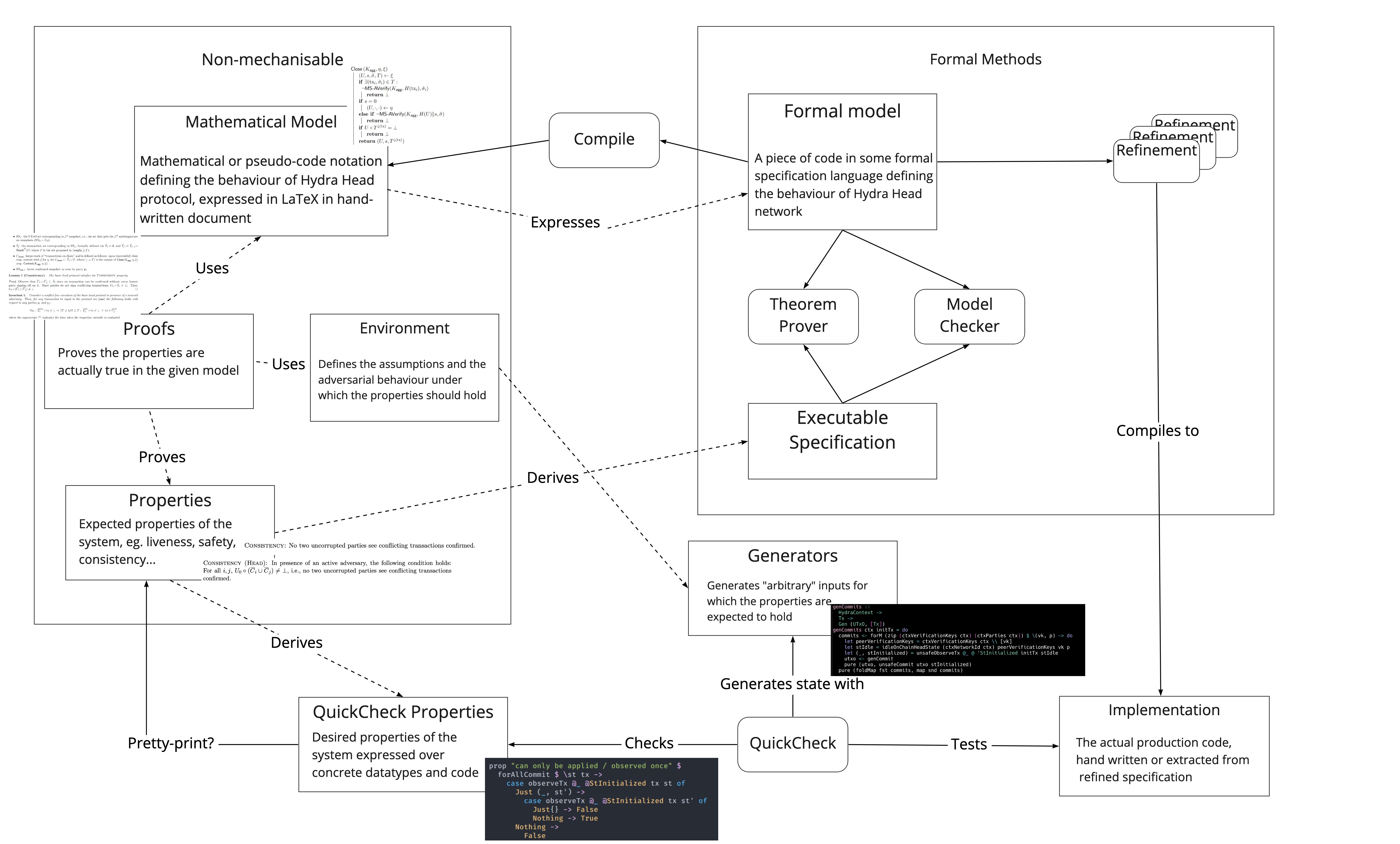
- In the short term, we should focus on specifying properties based on the requirements expressed in the paper, and defining suitable generators from a model of the environment
- The first and most important step should be to state the expected properties of the Head protocol, both off- and on-chain
- The generators should be expressed at the level of the whole behaviour of a Hydra Head, eg. generating complete (prefix) of expectedly valid execution traces, based on Adversarial assumptions and expected usage. Note that this includes a suitable model of the chain
- The properties should reflect as faithfully as possible the formal requirements stated in the paper. We could start with the haddock-based approach and explore possible "pretty-printing" of properties to be as close as possible to mathematical notations
- In the long run, we should invest in building a formal model of the Hydra Head protocol from which we could refine (parts of) the protocol implementation and formally state and prove expected properties